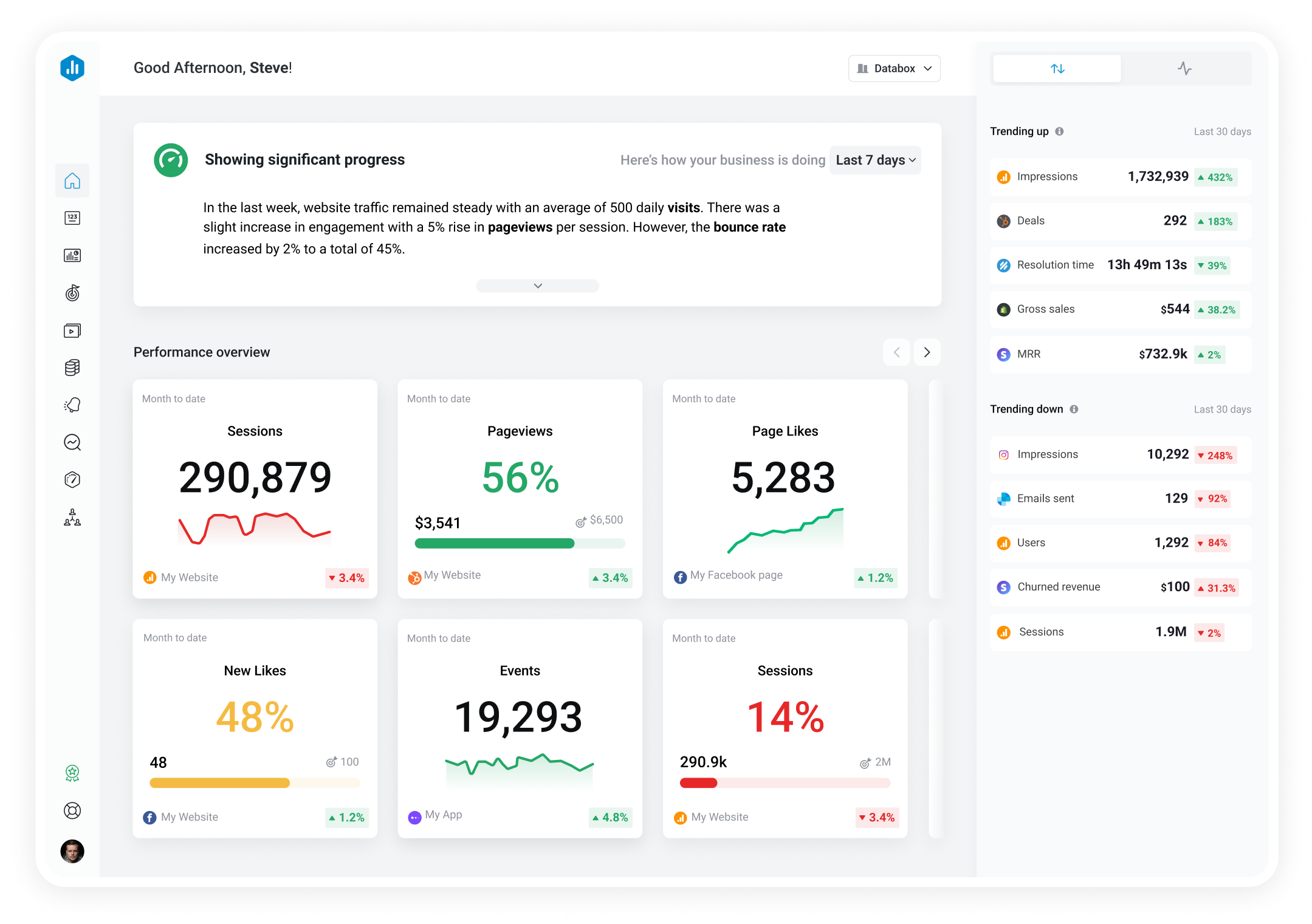Track all of your key business metrics from one screen
GET STARTED
 Facebook Pages
Attrition Rate
Facebook Pages
Attrition Rate Attrition rate measures the rate at which users are leaving or discontinuing their use of a product or service, in this case, Facebook. It is calculated as the percentage of total users lost over a specific period.
With Databox you can track all your metrics from various data sources in one place.
The attrition rate metric measures the rate at which customers stop using a product or service and discontinue their relationship with a company over a specific period of time.
This metric is crucial for all online businesses, but especially those with subscription-based models, as it directly impacts their overall growth and revenue streams.
To calculate your business’s attrition rate, you first need to get your hands on the necessary customer data and define the exact period for calculating the metric.
Once you have that, you can use the following formula:
Attrition Rate = (Number of Customers Who Discontinued / Total Number of Customers at the Beginning of the Period) * 100
Let’s say a SaaS company wants to calculate the attrition rate of customers over a quarter.
At the beginning of the quarter, the company had 1,000 active customers.
During the quarter, 20 customers chose not to renew their subscriptions, which means the company was left with 980 subscribers.
Let’s use the formula:
Attrition Rate = (50 / 1000) * 100 = 5%
As we can see, the attrition rate for the company over the quarter is 5%.
Lowering your customer attrition rate is a key objective for practically any business – nobody wants their customers to stop using their products.
Unfortunately, some attrition is inevitable and that’s true for any business regardless of how good their retention strategies are.
But what’s a reasonable attrition rate?
The number can vary based on your industry, business model, specific market conditions, the nature of your product, and many other variables.
For example, for subscription-based services (e.g., SaaS), a reasonable attrition rate typically falls within the range of 5% to 10% annually. Companies often aim to keep their attrition rate below 5% to maintain stable revenue streams.
In the telecommunications industry, which includes mobile phone plans and internet service providers, a reasonable customer attrition rate is often around 10% annually.
For online retail businesses, a reasonable customer attrition rate can range from 20% to 30% annually. This is because ecommerce companies often have higher attrition rates due to the competitive nature of the industry and the diversity of customer preferences.
In the fitness industry, where customers subscribe to gym memberships, attrition rates can also be relatively high. A reasonable attrition rate for gyms is often around 30% to 40% annually.
There’s no way to eliminate customer attrition completely, but you can use tested-and-proven strategies to minimize it and keep it under control.
Now, while these strategies will vary depending on your industry and product, there are some approaches that can be universally useful.
Here are a few of them that you can try out:
More resources to help you improve:

Used to show a simple Metric or to draw attention to one key number.

Used to illustrate numerical proportions through the size of the slices.

Used to show comparisons between values.
Databox is a business analytics software that allows you to track and visualize your most important metrics from any data source in one centralized platform.
To track Attrition Rate using Databox, follow these steps:
 Goals
Goals Scorecards
Scorecards Metric Digest
Metric Digest Metric Builder
Metric Builder Data Calculations
Data Calculations Performance Screen
Performance ScreenQuickly measure your awareness performance in Google Analytics, Google Organic Search and Facebook with this dashboard.


A high attrition rate means that a significant number of customers are discontinuing their use of your product. The key is to find the underlying reason for this and improve your retention strategies.
High attrition rates can be a huge issue as they lead to less revenue, higher customer acquisition costs, and potential challenges in sustaining your business growth.
Yes, in the context of customers, attrition is essentially the same as churn. Both terms refer to the rate at which customers stop using a product or service and discontinue their relationship with the company.
